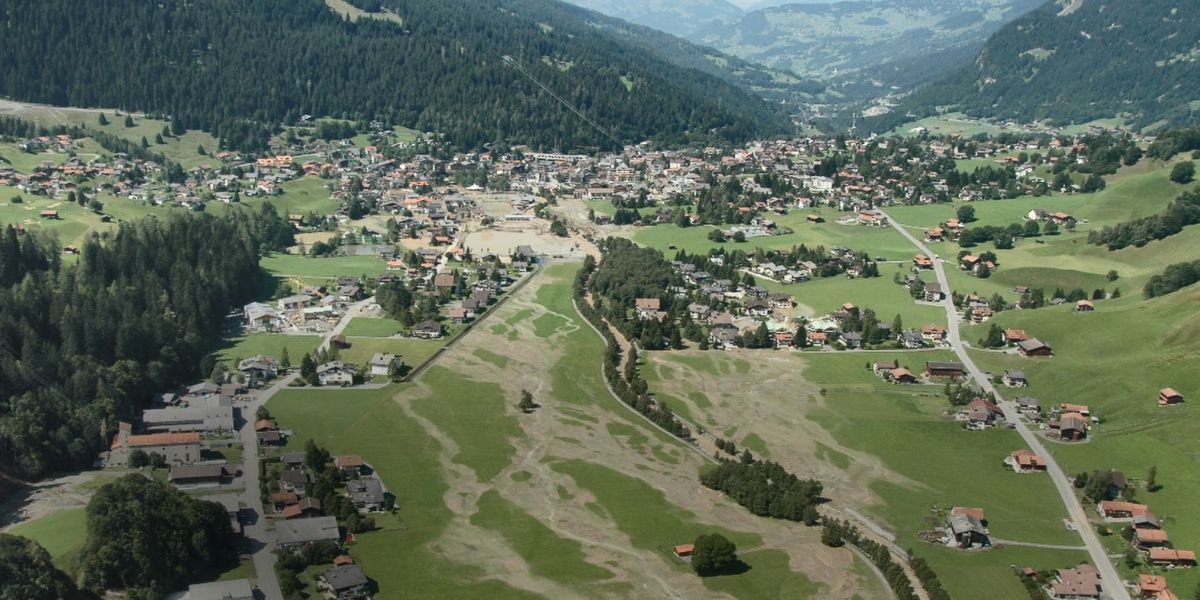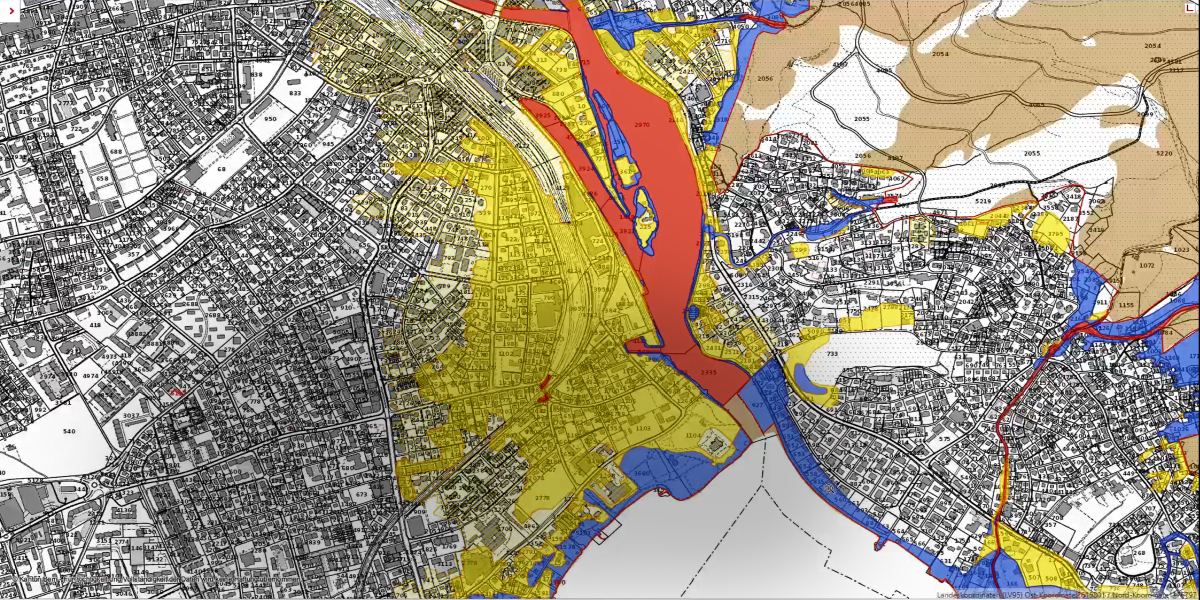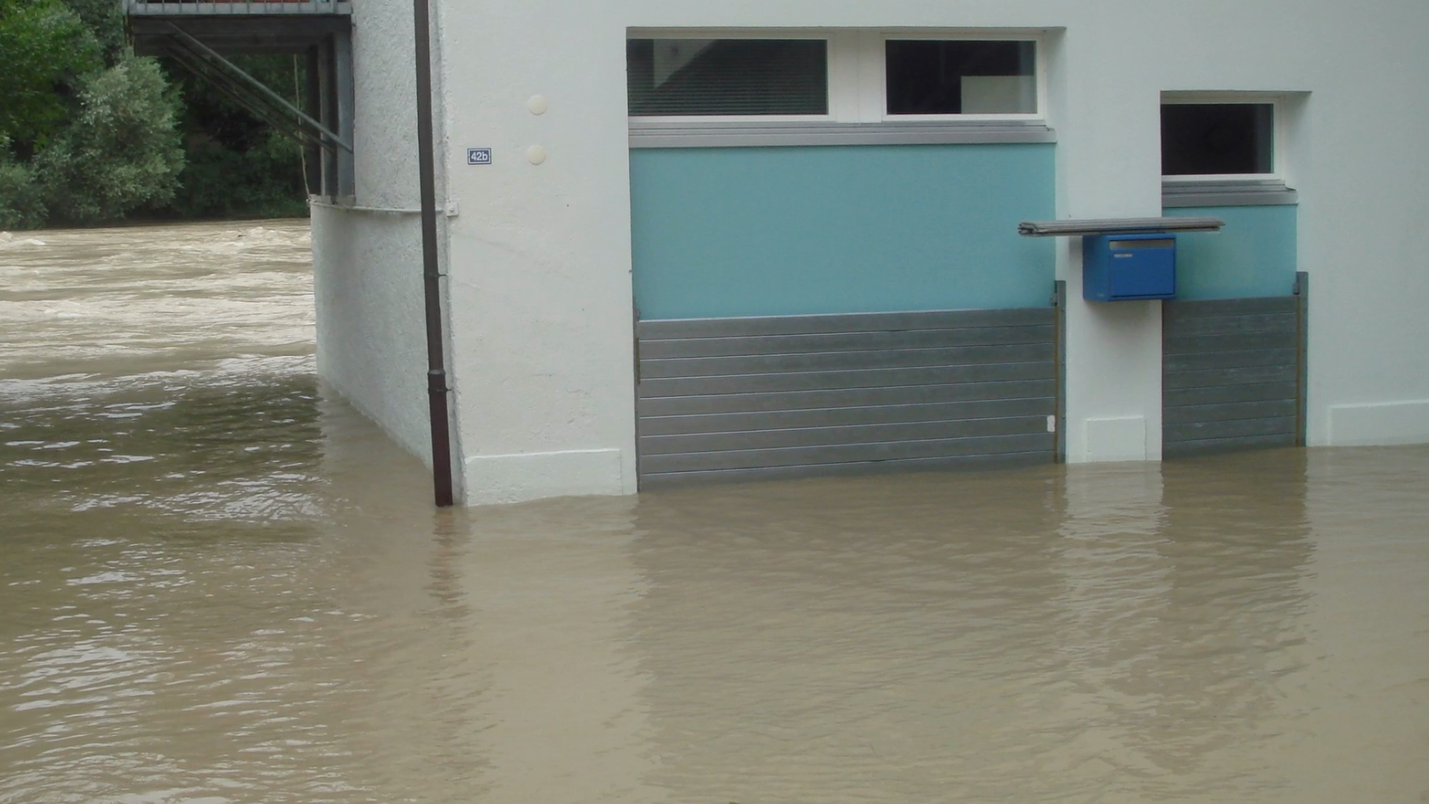




Floods not only cause great distress to the affected communities, but also result in high costs. For this reason, the Mobiliar Lab for Natural Risks at the University of Bern launched a research initiative entitled “Flood-Risk Research Initiative – From Theory to Practice”. The goal is to offer a sound basis and innovative tools for the sustainable management of flood risks.


Visualisation showing the sensitivity of losses to higher precipitation levels
Interactive map of Switzerland showing how damage increase as flood discharges rise
Interactive map of Switzerland that visualises the dynamic impacts of floods
Interactive map of Switzerland illustrating current and future flood damage and showing how it can be influenced
Interactive map of Switzerland showing how many buildings and individuals are potentially exposed to flooding, down to neighbourhood level
Interactive maps of Switzerland showing, at municipal level, how many buildings are potentially exposed to surface water floods and where they are located
Interactive image repository, covering the whole of Switzerland and containing over 4,000 images of floods from the past 700 years
Interactive tool showing which factors influence the risk of flooding and how these factors change over time for a selected example
The visualisation shows that moderate increases in precipitation levels due to climate change are already leading to significantly higher losses owing to extreme flooding. The visualisation is intended to help decision makers, specialists in natural hazards, engineers and operators of critical infrastructure to develop an awareness of the intensity and consequences of extreme flooding events – both today and in an even warmer climate.
The “Risk Sensitivity” tool shows how damage increase as flood discharges rise, e.g. due to climate change. The tool can support specialists with risk-based considerations such as assessing risks or planning suitable protective measures.

"Think the unthinkable" is a core principle of civil protection. The Flood Dynamics tool can support civil protection in preparing for previously unknown flood events.
Based on a number of precipitation scenarios, the Flood Dynamics tool visualises the direct and indirect effects of extreme precipitation in fast motion – from the rise to the subsiding of floodwaters. The tool is particularly useful in civil protection, both for communicating flood risks and for training purposes.




The damage simulator interprets the hazard map and shows the possible extent of damage to buildings in case of a flood event. Moreover, it illustrates how the possible extent of damage could change in the future and how it can be influenced.

In the area we cover, the flood damage potential is clearly above the Swiss national average. Thanks to the new movable flood barrier, we are even better equipped to deal with this hazard.
For the first time, the potential damage caused by flooding can be visualised using this tool right across Switzerland – down to individual neighbourhoods. It helps you see how many people or important assets are exposed to floods and where they are located.
The evaluation enables the potential damage from surface water floods to be identified at municipal level throughout Switzerland for the first time. It shows how many buildings, building assets, employees and other people are exposed to surface water floods and where they are located.

With this tool I can enable the pupils to comprehensively explore the topic of flood risks in a practical manner and to compare their findings with scientific knowledge.
No other natural disaster is costlier to Switzerland than flooding. Over two-thirds of the damage caused by natural disasters is due to floods, which have affected four out of every five Swiss municipalities over the past 40 years. Yet although the new purchase value of all at-risk buildings is around CHF 500 billion and the corresponding damage can amount to several billions, researchers so far have barely addressed the damage caused by flooding, instead focusing mostly on why and how these floods occur.
The research initiative entitled “Flood-risk research initiative – from theory to practice”, conducted by the Mobiliar Lab for Natural Risks, is supplementing traditional research on flooding by examining the damage it causes. Various research projects launched in 2018 aim in particular to develop decision-making resources for flood-risk management.
The research initiative is developing practical tools that look into all the eventualities that can arise in the event of flooding, thereby helping cantonal and municipal authorities, other experts and the general public to identify flood risks so that subsequent damage can be minimised. These resources also help prioritise protective measures in full knowledge of the facts and potential risks. The research initiative provides important fundamental data for comprehensive risk management, as required by PLANAT ('Plattform Naturgefahren').
Flooding can be prevented using measures ranging from spatial planning to organisational precautions and by drawing on technical and biological measures, for example protection forest.
However, individuals can contribute to flood protection, too – for instance through measures for property. On the website Schutz-vor-Naturgefahren.ch (in French and German), different methods are presented for specific types of users and needs. For example, the natural disaster checklist contains specific measures usable by homeowners to protect their properties against flooding.
The Mobiliar Lab for Natural Risks is a joint research initiative at the University of Bern’s Oeschger Centre for Climate Change Research and Swiss Mobiliar. The Mobiliar Lab’s research work focuses mainly on floods, storms and hail as well as the associated loss and damage potential, with strong emphasis placed on the practical application of findings.
The Mobiliar Lab was established in 2013, at which time the partners jointly defined the scope of the research’s subject matter. Since then, the researchers have further expanded their focus for practical use.
The independence of teaching and research at the Mobiliar Lab is contractually guaranteed. The Mobiliar Lab is free to choose its research projects and methods as well as any research partners. Furthermore, the Mobiliar Lab acts autonomously in the interpretation of research results. Research results and findings remain the property of the University of Bern and are published through customary scientific channels. Like the University of Bern, the Mobiliar Lab pursues a strategy of free access to its research results.
A joint research initiative:
The research initiative entitled «Flood-risk research initiative – from theory to practice», which was initiated in 2018, encompasses various scientific projects. Please visit the Mobiliar Lab’s website for further information.
Whether floods, storms or hail – the general public takes a great interest in Natural Risks. Researchers from the Mobiliar Lab for Natural Risks regularly answer questions from journalists and are invited to give presentations to community, political and business decision-makers. Expertise gleaned from Natural Risks research is needed at the local, regional and national level. The Mobiliar Lab also actively supports public outreach activities.
University of Bern
Mobiliar Lab for Natural Risks
Hallerstrasse 12
CH-3012 Bern
Phone: +41 31 684 88 39
E-Mail
To make sure you don’t miss the latest news about our research and events, why not subscribe to our newsletter?
Please do not hesitate to share your feedback.
We look forward to your opinions and comments to help us in our research.
Die fünf folgenden Lernmodule zeigen zu den vier Tools Schadensimulator, Schadenpotenzial, Überschwemmungsgedächtnis und Risikodynamik verschiedene Umsetzungsmöglichkeiten zum Thema Hochwasserrisiken – im Schulzimmer und im Freien.
Hochwasserrisiken
Nachstehendes Video veranschaulicht für die Sekundarstufe II, wie der Lerntransfer vom «Verstehen zum Handeln» im eigenen Lebensraum mit Hilfe dieser Tools gelingt. Weiterführende Informationen finden sich hier.
